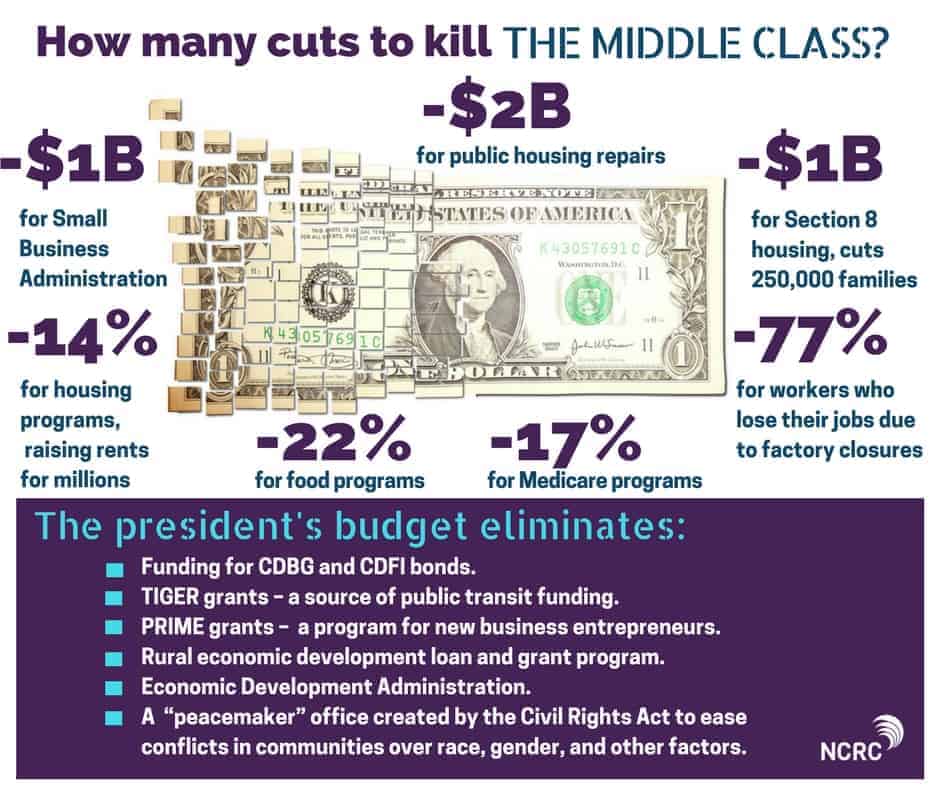A White House “budget” proposal isn’t really a budget or a real proposal. Presidents float budgets. Congress makes them.
But even if it’s a prop for political theater, a president’s budget isn’t meaningless. It’s a vision, a wish list reflecting what the president imagines for the nation’s future and what agency heads and political operatives hope to implement if only Congress would let them.
The president’s 2019 budget proposal presents a profoundly troubling vision for our nation’s working class. Any fair analysis of the proposed budget leads to the conclusion that blue-collar workers will suffer death by a thousand cuts. Line by line, the budget increases the probability of poor education and financial insecurity for more Americans. Some obvious examples include cuts to healthcare, small business loans, social services, pollution controls, consumer protections, and affordable housing. The long-held dream of upward mobility is challenged throughout this budget.
This is the second phase of a scheme to funnel more wealth to people who already have it, and dismantle services, support and financial security for everyone else.
Phase one is a done deal — the tax overhaul passed last year, primarily benefits large business owners and the uber-wealthy while saddling all Americans with a $1.5 trillion debt over the next decade.
The White House budget underfunds or eliminates programs for community development, small business, and housing assistance that created pathways of opportunity for Americans for decades. It slashes 77% of the funding from a program to assist laid-off factory workers and workers whose jobs were destroyed by natural disaster. It eliminates critical programs for rural workers and small business development. Community Development Block grants are entirely wiped out, which means cities and towns with smaller tax bases won’t have the funding to maintain roads, sewers, waterway systems and other critical needs. All voters in these cities and towns will directly feel the impact of these cuts. It’s a sad and lackluster vision.
But millions of Americans still believe a better future is possible. It is possible, when the federal budget prioritizes wealth accumulation for the broadest segments of our population and not just those at the top.
Congress should send a budget to the President’s desk that reflects a genuine concern and commitment to the hundreds of millions of Americans struggling to stay above water. Without these fiscal priorities, the American dream will continue to look more and more nightmarish.
NCRC’s budget chart gives a complete list of key program cuts: http://bit.ly/2EHocAA




Hey There. I found your blog the use of msn. This is a really well written article.
I will be sure to bookmark it and return to learn more
of your useful information. Thank you for the post.
I will definitely return.